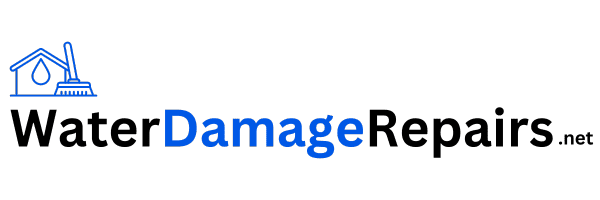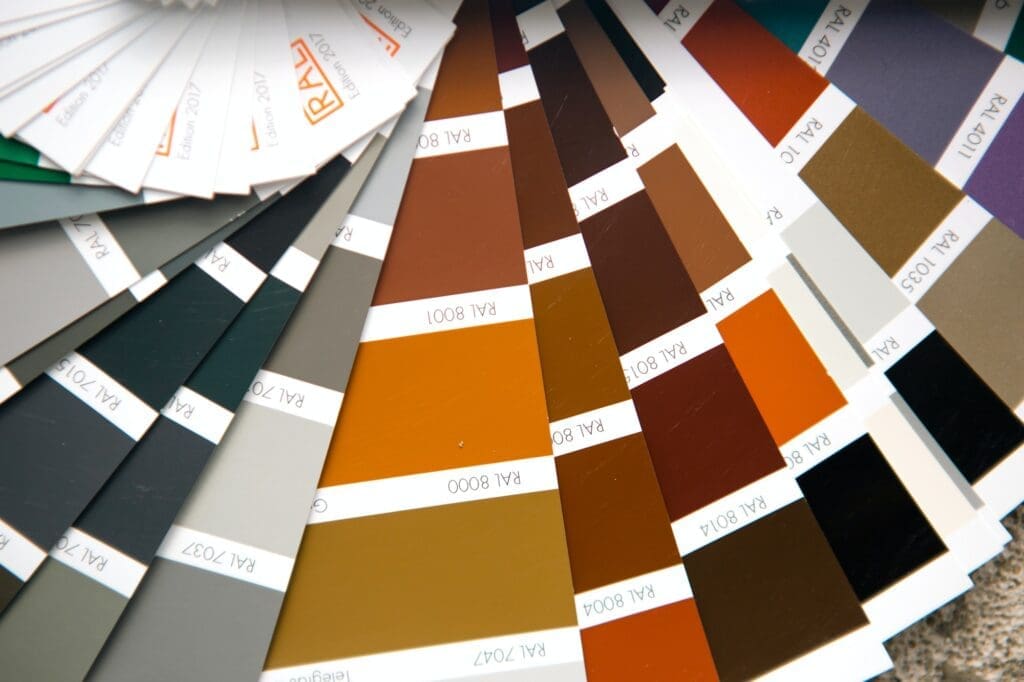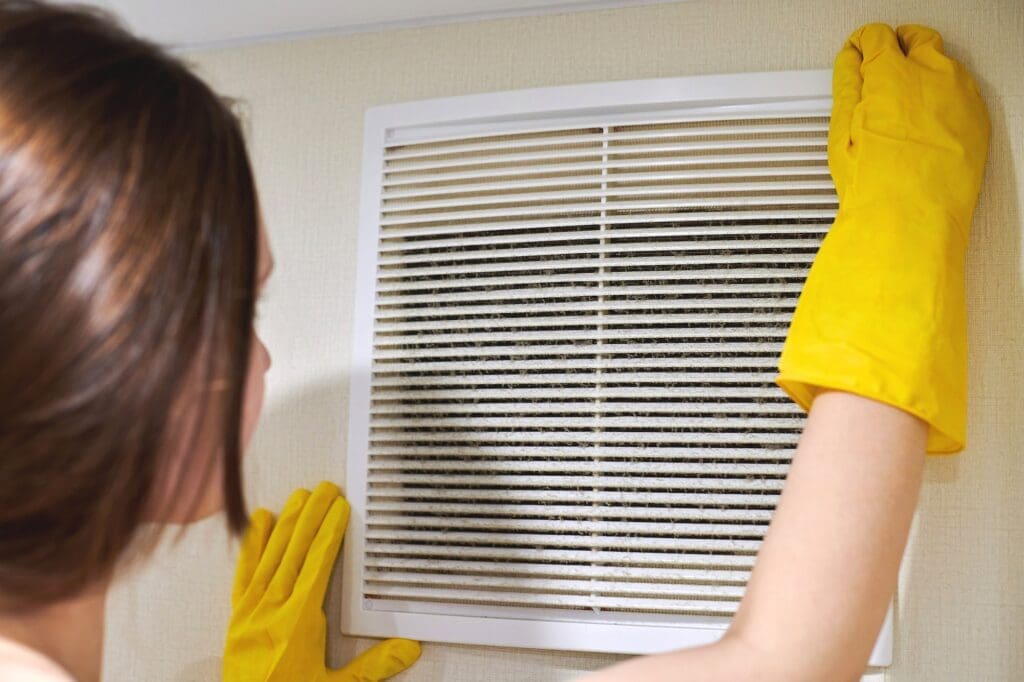A Breath Of Fresh Air: How To Improve Indoor Air Quality After Water Damage
As a fellow environmental enthusiast, I’m sure you’ll agree that the air we breathe is one of our most precious resources. It’s something we often take for granted – until it’s compromised by water damage or other pollutants in our homes.
When disaster strikes and leaves behind dampness, mold, and mildew, it can be more than just an eyesore. These unwelcome guests can wreak havoc on your home’s indoor air quality, posing potential health risks to both you and your loved ones.
But fear not! As someone who cares deeply about the environment and serving others, I have gathered some valuable information to help restore clean air in your living space after water damage. In this article, we will explore various ways to improve indoor air quality so that you can breathe easy again while also helping those around you do the same.
So let’s dive into this breath of fresh air together and create healthier spaces for ourselves and future generations!
Identifying The Source Of The Damage
As the saying goes, ‘a stitch in time saves nine,’ and this couldn’t be more true when it comes to dealing with water damage. The key is to identify the source of the problem early on so you can nip it in the bud before things spiral out of control.
Identifying causes may seem like a daunting task, but trust me, it’s essential for preventing recurrence and ensuring your indoor air quality remains unaffected. Start by conducting a thorough investigation around your home – check for leaks or seepage from pipes, appliances, and even external sources such as rainwater entering through cracks or openings. Don’t forget to inspect hidden areas like crawl spaces or attics!
If necessary, enlist professional help to pinpoint the exact cause and develop an action plan that will prevent future incidents. Before we move on to drying out the affected area, remember: knowledge is power; knowing where the issue stems from will give you peace of mind and pave the way for remedying any lingering effects of water damage.
Drying Out The Affected Area
Now that we’ve successfully identified the source of water damage, it’s time to focus on drying out the affected area. This step is crucial in restoring your indoor air quality and preventing any further issues like mold growth or structural damage. Plus, nothing feels better than knowing you’re doing your part to create a healthier living environment for yourself and others.
Begin by determining humidity levels in the space using a hygrometer, which will help you gauge how much moisture needs to be removed.
To speed up the drying process, open windows and doors if possible, use fans or dehumidifiers strategically placed around the room, and don’t forget about locating leaks that may still be contributing to excess moisture.
Once everything has properly dried out, take a moment to pat yourself on the back – not only have you tackled an important task but also contributed positively towards improving our planet’s overall health!
As we move forward with this journey together, let’s dive into disinfecting the area so we can truly breathe easy once again.
Disinfecting The Area
I’m sure we can all agree that disinfecting an area after water damage is essential for keeping the air quality safe. Disinfecting surfaces is the first step, followed by disinfecting the air and HVAC system. We’ll need to cover all of these points to ensure the area is completely safe and that we can all breathe a sigh of relief!
Disinfecting Surfaces
I’ve got to say, there’s something deeply satisfying about disinfecting surfaces after water damage. It’s like we’re taking back control of our home and making it a safe haven for ourselves and our loved ones.
To effectively tackle this task, sterilizing fabrics is an essential step in the process as well as purifying air to remove any lingering pollutants or allergens.
As environmental stewards, let’s roll up those sleeves and make every effort to create a cleaner living space that promotes good health and overall wellbeing – because, at the end of the day, isn’t that what caring for one another is all about?
Disinfecting Air
Now that we’ve tackled sterilizing surfaces, it’s time to turn our attention to the invisible yet crucial aspect of disinfecting – purifying the air.
As environmental champions, we understand that clean air plays a vital role in promoting good health and preventing recurrences of water damage-related issues like mold growth.
So let’s take a deep breath (not literally just yet!) and dive into the world of air purification.
By doing so, not only are we creating a safe haven for ourselves but also extending our care towards others by ensuring they breathe easy too – because after all, isn’t sharing the gift of fresh air one way to show how much we truly care?
Disinfecting Hvac System
Now that we’re on this journey of purifying our surroundings together, let’s take a closer look at an essential part of the disinfection process – cleaning your HVAC system.
You see, as environmental stewards like us know, these systems play a crucial role in maintaining good air quality and preventing mold growth indoors.
So it’s only natural for us to ensure they are running efficiently and keeping our shared spaces fresh!
We’ll need some testing equipment to assess how well our HVAC systems are performing and identify any potential problem areas.
By taking care of this critical aspect, we not only contribute to cleaner indoor environments but also help in promoting better health among those who share these spaces with us.
And isn’t that what being environmentally conscious is all about – caring for one another while preserving Mother Earth?
Removing Mold And Mildew
Ah, the dreaded mold and mildew. While they may be natural parts of our ecosystem, there’s no denying that these uninvited guests can wreak havoc on your indoor air quality after water damage – not to mention put a damper on your mood as well! As much as we love Mother Nature, preventing mold and preventing mildew from spreading in our homes is essential for maintaining a healthy living space.
So, how do you show these unwelcome organisms the door? Here are 4 simple steps you can follow:
- Identify potential problem areas: Look out for any damp spots or water leaks around windows, pipes, and appliances like washing machines and dishwashers.
- Dry up moisture immediately: The faster you act upon spotting excess moisture or standing water, the less likely it is that mold and mildew will have time to grow.
- Improve ventilation: Make sure your home has adequate airflow by keeping vents open and using exhaust fans when cooking or showering.
- Clean regularly: Frequently cleaning surfaces with anti-mold products will help keep mold spores at bay while also giving your home a fresh feel.
By following these tips (and perhaps even enlisting some elbow grease), you’ll be well on your way to breathing easier indoors once more.
But don’t stop here – replacing damaged materials is another crucial step towards restoring the quality of life within your walls.
Replacing Damaged Materials
Now that we’ve addressed improving indoor air quality, let’s talk about replacing damaged materials in our homes. One of the best ways to serve others and protect our environment is by making sure our living spaces are safe and healthy for everyone.
After water damage, it’s essential to replace any materials that have been compromised, such as installing insulation or repairing pipes. Not only will this help prevent further harm to your home but also contribute to a cleaner atmosphere inside.
When tackling these repairs, remember to choose eco-friendly options whenever possible – like using recycled insulation or sourcing sustainable plumbing components. This way, you’re not only improving your own living conditions but also contributing towards a greener future for all.
By taking care of our homes and choosing environmentally responsible solutions, we can make a positive impact on both the planet and the people around us. So go ahead, roll up those sleeves and start fixing up your space!
And once you’ve finished replacing those damaged materials, let’s dive into ventilating the air so we can breathe even easier in our refreshed sanctuary.
Ventilating The Air
Imagine your home as a living, breathing organism. Like us, it needs to inhale fresh air and exhale stale air for optimal health. Ventilating the air after water damage is crucial in maintaining good indoor air quality and ensuring our homes breathe easy once again.
To keep the airflow moving like a gentle breeze through your home, consider implementing these strategies:
- Installing fans: Strategically place fans throughout affected areas to increase circulation and promote drying.
- Opening windows: If weather permits, open windows to let in fresh outdoor air while expelling damp interior air.
- Changing filters: Regularly replace HVAC system filters to prevent mold spores from circulating within your home.
- Using exhaust fans: Utilize bathroom and kitchen exhaust fans to help remove excess moisture generated by daily activities such as cooking or bathing.
- Investing in an energy recovery ventilator (ERV): An ERV can efficiently exchange incoming fresh outside air with outgoing stale indoor air, reducing humidity levels inside your home.
As you see how these simple ventilation techniques create a harmonious rhythm of clean air flowing through your space, don’t forget that other surfaces may also be hiding contaminants. Your floors are silently soaking up pollutants just like sponges; next on our journey towards improving indoor air quality is addressing carpets and upholstery.
Cleaning Carpets And Upholstery
Now that we’ve covered the basics of improving indoor air quality after water damage, let’s dive into some specific cleaning techniques for your carpets and upholstery. These areas can harbor allergens and mold spores if not cleaned properly, so it’s essential to give them a thorough clean for optimal allergen prevention. I know you’re eager to create a healthy living space for yourself and others, so we’ll explore some practical tips that are both eco-friendly and effective.
Here’s a handy table comparing different carpet and upholstery cleaning methods:
| Cleaning Method | Advantages | Disadvantages |
|---|---|---|
| Steam Cleaning | Kills bacteria & mold; no harsh chemicals needed. | Requires longer drying time; potential risk of over-wetting fabrics. |
| Dry Foam Extraction | Minimal moisture used; shorter drying times. | May leave behind residue; less effective in removing deep dirt. |
| Bonnet Cleaning | Quick-drying process; ideal for spot treatments. | Not recommended for deeply embedded soil or stains. |
| Green Cleaning Solutions | Environmentally friendly alternatives to traditional chemical cleaners. | Effectiveness may vary depending on product choice & application method. |
By following the appropriate cleaning techniques mentioned above, you’ll be well on your way toward restoring freshness to your home without compromising the health of those around you. This is just one step towards creating an oasis free from harmful pollutants – next up, let’s discuss how installing air purifiers can further enhance your indoor environment!
Installing Air Purifiers
Now that we’ve tackled the immediate concerns of water damage, let’s dive into a longer-term solution for improving your indoor air quality: installing air purifiers.
Trust me, folks, this step is worth it! Taking the time to research and compare models will not only help you make an informed decision but also ensure you’re investing in a device that truly serves others by creating a healthier environment for everyone who steps foot inside.
When choosing the right air purifier for your space, don’t forget to consider different sizes as well. A larger unit may be necessary if you have extensive square footage or higher ceilings; smaller options might suffice for more confined areas.
As someone passionate about environmental wellness, I can attest to the benefits of finding just the right fit – cleaner air means fewer allergens and pollutants lingering around, benefiting both our planet and those we care about most.
With all these factors in mind, it’s time to explore how utilizing air filtration systems can further enhance our indoor sanctuary.
Utilizing Air Filtration Systems
Picture this: walking into a room where the air is as crisp and clean as an untouched mountaintop. That’s the level of quality we’re aiming for when it comes to improving indoor air after water damage.
One of the most effective ways to achieve that goal is by utilizing air filtration systems. Choosing filters with high-efficiency particulate air (HEPA) technology will help capture even the tiniest particles, while installing equipment like dehumidifiers can regulate humidity levels in your home, discouraging mold growth and other allergens.
By investing time and effort into finding the right tools for our specific needs, we not only serve ourselves but also contribute positively to those around us who share our living spaces. The act of purifying our environment allows us to breathe easier, focus better, and feel more at ease knowing that we are taking steps towards a healthier future.
As you continue on your quest for improved indoor air quality, don’t forget to check for radon and carbon monoxide – two invisible yet potentially dangerous threats lurking within many homes.
Checking For Radon And Carbon Monoxide
Now that we’ve discussed improving indoor air quality after water damage, let’s dive into another crucial aspect: checking for Radon and Carbon Monoxide. These two invisible yet dangerous gases can wreak havoc on our health if left unchecked.
Thankfully, there are straightforward methods to test their levels and prevent buildup in your home. Testing levels of radon and carbon monoxide is a vital step towards ensuring the safety of our loved ones and ourselves.
There are affordable testing kits available online or at local stores that make it easy to monitor these hazardous gases within your living space. By regularly keeping an eye on these levels, you’ll be able to take action when necessary, such as installing ventilation systems or sealing cracks to keep them out.
In doing so, not only will you create a safer environment for yourself but also contribute positively to the well-being of those around you by preventing harmful gas buildup in shared spaces.
Frequently Asked Questions
How Can I Prevent Water Damage From Occurring In The First Place, And What Proactive Steps Can I Take To Improve Indoor Air Quality?
As someone who’s passionate about maintaining a healthy environment, I can’t stress enough the importance of taking preventative measures to avoid water damage and keep our indoor air quality at its best.
After all, we spend so much time indoors that it’s crucial for us to breathe clean air and create a space where our loved ones can thrive.
To prevent water damage from occurring in the first place, make sure you’re regularly checking for leaks, keeping gutters clean, and properly insulating your home.
Investing in an air purification system is also an excellent proactive step towards improving indoor air quality – not only does this help remove allergens and pollutants from the air, but it also works wonders in reducing humidity levels which can contribute to mold growth.
By staying vigilant with these efforts, we’ll be doing ourselves (and those around us) a great service by cultivating healthier living spaces.
How Long Does It Typically Take For Mold And Mildew To Develop After Water Damage, And What Signs Should I Look For To Detect Their Presence?
Imagine walking into a room only to be greeted by an unpleasant, musty odor that makes you feel like you’re in the depths of a damp cave. That’s often one of the first signs of mold and mildew growth after water damage.
It typically takes just 24-48 hours for these unwelcome guests to start developing when there’s excess moisture present. To keep your indoor environment healthy and free from harmful airborne particles, it’s essential to focus on moisture control and implement dehumidifying solutions as soon as possible after water intrusion.
As an environmental advocate, I urge everyone to remain vigilant about spotting early warning signs such as discolored walls, peeling paint or wallpaper, and persistent odors – all indicators that it’s time to take action against mold and mildew growth while serving our collective goal of maintaining healthier living spaces for ourselves and others around us.
Are There Any Specific Types Of Indoor Plants That Can Help Improve Air Quality After Water Damage And Reduce The Presence Of Mold And Mildew?
Absolutely! There are several indoor plants that can work wonders in improving air quality and reducing the presence of mold and mildew after water damage.
Some of my personal favorites include the Spider Plant, Peace Lily, English Ivy, and Boston Fern – all of which are known to be natural air purifiers. These green friends not only add a splash of life to your space but also actively help in moisture control by absorbing excess humidity from the air.
So, while you’re considering investing in an air purifier or taking other steps to improve indoor air quality post-water damage, don’t forget about our humble plant allies who quietly serve us by cleansing the very air we breathe.
What Are The Potential Health Risks Associated With Poor Indoor Air Quality After Water Damage, And How Can I Protect Myself And My Family From These Risks?
It’s like walking on thin ice when dealing with the potential health risks associated with poor indoor air quality after water damage.
To protect yourself and your loved ones, it’s essential to consider effective ventilation solutions and invest in reliable air purifiers.
Breathing contaminated air can lead to various respiratory issues, allergies, and even more severe health problems if left unchecked.
By proactively tackling these invisible hazards through proper airflow management and air purification technology, you’re not only creating a safer environment for your family but also contributing to a healthier world around you – now that’s truly being a breath of fresh air!
Can Water Damage And Poor Indoor Air Quality Have An Impact On The Overall Structural Integrity Of My Home, And If So, What Measures Can I Take To Address This Issue?
Absolutely, water damage and poor indoor air quality can have a significant impact on your home’s structural integrity.
As someone who cares about the environment and serving others, I’d recommend taking measures to address this issue as soon as possible.
Firstly, consider waterproofing your home to prevent further water intrusion that could weaken the foundation or cause mold growth in hidden areas.
Additionally, invest in high-quality air purifiers equipped with HEPA filters for better overall indoor air quality.
By doing so, you’re not only protecting your family’s health but also contributing to maintaining a healthy environment for everyone around you!
Conclusion
In my own experience, I’ve dealt with the aftermath of water damage firsthand. It was a seemingly innocent leak that led to serious consequences on our home’s indoor air quality and structural integrity.
Coincidentally, it was also during this time that we discovered specific types of indoor plants can help improve air quality after water damage.
I cannot stress enough how important it is for us all to take proactive steps in preventing water damage from occurring in the first place. Not only do we protect ourselves and our families from potential health risks associated with mold and mildew growth, but we also ensure the longevity and safety of our homes.
So next time you come across any signs of water damage or suspect poor air quality indoors, remember there are ways to combat these issues while preserving your well-being and your beloved home.
Stay vigilant, invest in solutions like indoor plants, and always prioritize the health of both yourself and your surroundings.



